Mary has requested that the daily message be given each day
to the world. It is read nightly at the prayer service from her Image Building in
Clearwater, Florida, U.S.A. This is according to her request. All attempts will be made to
publish this daily message to the world at 11 p.m. Eastern time, U.S.A.
We acknowledge that the final authority
regarding these messages rests with the Holy See of Rome.
|
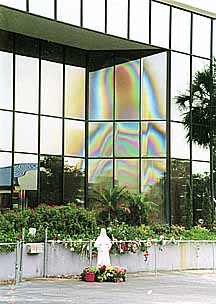 |
October 26, 2000
A Prayer for Intimacy
with the Lamb, the Bridegroom of the Soul
Oh Lamb of God, Who take away the sins of the world, come and act
on my soul most intimately. I surrender myself, as I ask for the grace to let go, to just
be as I exist in You and You act most intimately on my soul. You are the Initiator. I am
the soul waiting Your favors as You act in me. I love You. I adore You. I worship You.
Come and possess my soul with Your Divine Grace, as I experience You most intimately.
Messenger: Include Our Lady of the Holy Spirit
Center in 6:20 prayers.
Messenger: Please pray for 3 urgent
intentions!
Jesus speaks: My people,
I am communicating to the earth through the messages I give
daily. These messages are most important to bring about the Reign of My Sacred
Heart.
There is a small remnant of people that hear My message
daily.
You have been chosen to help change the world.
You must pray united to the Mass.
Pray through the powerful intercession of Our Lady of
Clearwater for the priests, the Church and the world.
I AM YOUR SAVIOR.
I SPEAK TO YOU HERE.
I love you,
Jesus.
You are My apostles.
Messenger: Please pray for the healing of
Father Carter through the intercession of Our Lady of Clearwater.
October 26, 2000 - Second Message
A message from Jesus
Jesus speaks: YOU MUST PRAY.
Your society is sick.
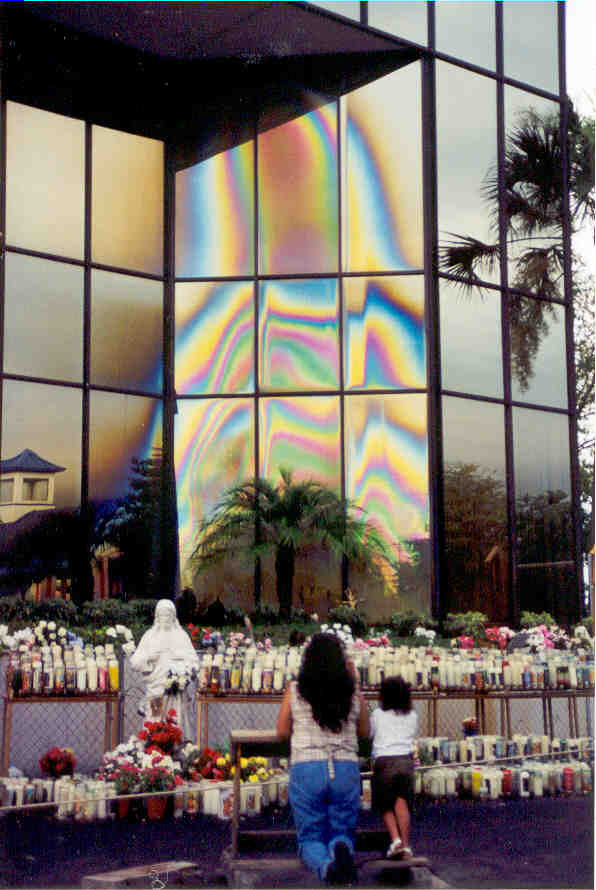
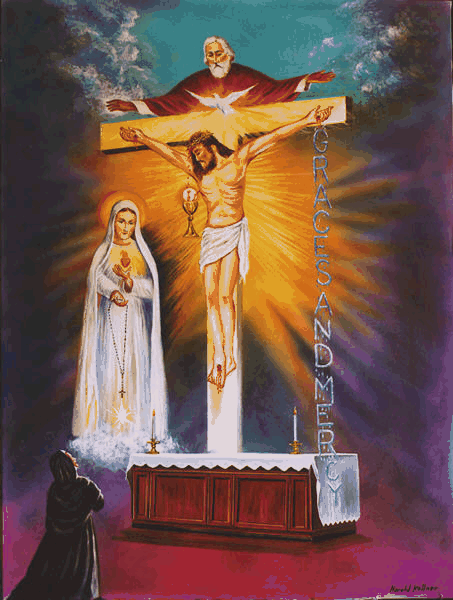
Jesus speaks: You can pray for the healing of the people of society
using the Healing Rosary, pleading that the cancer that makes people sick in
society will be uprooted and thrown in the sea—
Pray as directed through the powerful intercession of Our
Lady of Clearwater—unite it to a particular Mass and all Masses going on
around the world.
I love you, Jesus.
Pray through Our Lady of Clearwater united to the Mass.
A Rosary for Healing or for Someone with
Cancer.
On one Hail Mary bead or as many as you desire, say: (this is given for Fr.
Carter, you can replace your loved one's name).
May God heal Fr. Carter through the intercession of Our Lady of
Clearwater in union with the Mass and all the Masses being celebrated around
the world.
Pray the Hail Mary or Hail Mary's then pray this after the Hail Mary.
May the cancer be uprooted and thrown into the sea.
We believe with all our hearts.
After the Glory Be— pray the following petition.
May Fr. Carter be healed through the intercession of Our Lady of
Clearwater if it be the holy will of God.
Note: You can look at Mary on the image rosary while you pray this rosary.
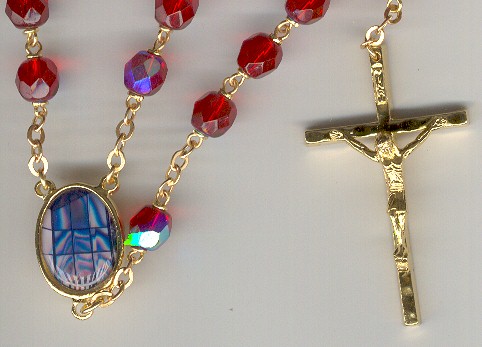

Messenger: CAN YOU HELP US BY GIVING US ROSARIES FOR THE
SCHOOLS REQUESTING THEM?
Mary speaks: PLEASE MAKE WALTER'S
ROSARIES. THE SCHOOLS WANT ROSARIES AND THERE ARE NOT ANY ROSARIES LEFT.
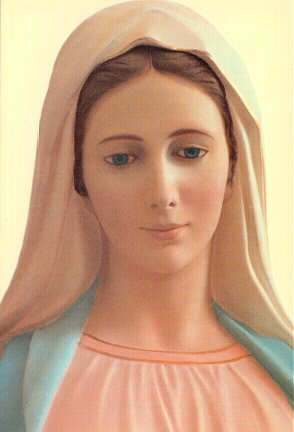
October 26, 2000 - Third Message
Messenger: Nine years ago this month Jesus began giving me
these revelations, October 1991.
50 years after Fatima, our founder wrote Response
in Christ, his first book.
33 years later, we present them to you.
From the book, Response in Christ, we include the
following excerpt about the Mass.
I wish to present an outline of the chapter here on the
Mass.
Chapter 4 - The Sacraments and the Mass
1. The Sacraments in
General
2. The Mass
a)
Sacrifice in General
1) Interior Oblation
2) Exterior Offering
3) Immolation of the Victim
4) Acceptance of the Sacrifice by God
5) Partaking of the Sacrificial Victim
b)
Christ's Sacrifice
1) The Interior offering of Our Lord
2) Ritual Oblation
3) Immolation of the Victim
4) The Father's Acceptance of Christ's Sacrifice
5) The Banquet in Christ's Sacrifice
c)
The Sacrifice of the Mass
1) Interior Oblation of the Mass
2) Ritual Oblation of the Mass
3) Immolation of the Victim
4) The Father's Acceptance of the Eucharistic Sacrifice
5) Partaking of the Eucharistic Meal
d)
The Christian's Participation in the Mass
1) The Baptized Christian and the Mass
2) The Mass lived out
Mass Book II Entry
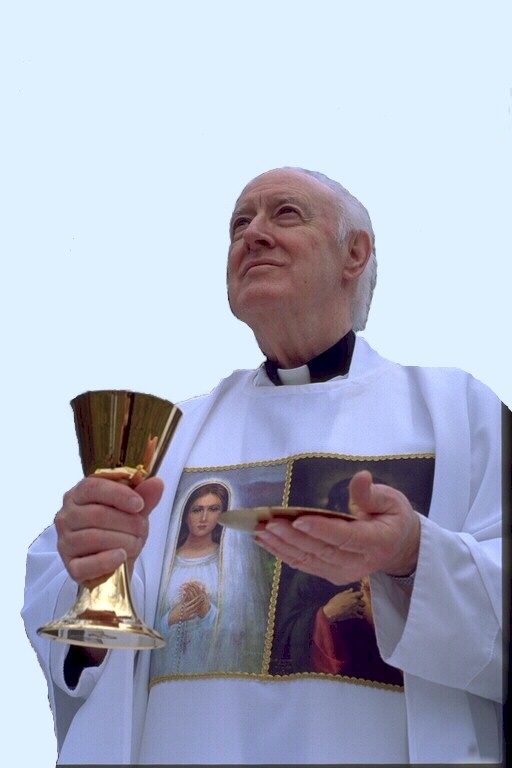
Through Him, With Him and In Him
Excerpt from
Response in Christ
(by Fr. Edward J. Carter, S.J.)
From Chapter Four - The Sacraments and
the Mass
b) Christ's Sacrifice
We will consider Christ's sacrifice according to the same
constituent elements of sacrifice already discussed. In this treatment we will
follow the theory of the unicists, who hold that Our Lord offered only one
complete sacrifice as opposed to the dualist theory which says Christ offered
two complete sacrifices, one at the Last Supper, and one on Calvary. The Church
allows either position. We prefer to follow the position of the unicists, since
this seems to give a greater unity to Christ's sacrifice, and indeed to the
total mystery of Christ. This profound unity of Christ's mystery has become more
and more apparent with the scriptural, liturgical and theological renewals.12
1)
The Interior offering of Our Lord
The sacrifice which Christ offered for the redemption of the
world was first and foremost an interior moral act. Christ's life possessed its
great value because of His interior dispositions. His entire life was a constant
gift of Himself in love to the Father and to mankind, and Calvary was the
supreme expression of this gift. This gift of self was regulated by a perfect
conformity to His Father's will.
Christ not only was constantly
living out this interior disposition of sacrifice, but He strove to inculcate
the necessity of it in the Jews of His time. He constantly opposed a false and
legalistic concentration on the mere externals of Jewish purifications, for such
an attitude tended to diminish the necessary internal dispositions. The synoptic
theology of sacrifice stresses this attitude of Christ. Bernard Cooke states:
"This insistence of Jesus on internal dispositions characterizes the
Synoptic theology of sacrifice, which continues and completes the prophetic
emphasis on the moral and individual aspect of sacrifice. . . . One must
be careful, however, not to exaggerate the opposition (either in the prophets or
in the Synoptic Gospels) between cult and internal dispositions of soul."13
2)
Ritual Oblation
As we have said, man, because of his corporeal and social
nature, has always desired to express the interior oblation of sacrifice in an
external, ritual oblation. So it was with Christ. Unlike the dualists, who
maintain that Christ's interior offering was sufficiently exteriorized during
the passion itself, the unicists maintain that the only place where we can
locate a ritual oblation is at the Last Supper. This ritual oblation cannot be
found in any other phase of Christ's sacrifice – from the Garden to the Cross
– despite the efforts of some to do so. Notice, too, that in the case of Christ's
sacrifice, the ritual oblation of the Last Supper is of a victim-to-be-immolated
rather than of a victim already immolated.
Christ's ritual oblation at the Last
Supper possessed a many-faceted signification. We will comment on several
aspects. We begin by recalling the social implications of the ritual oblation.
This social element is present in Christ's actions at the Supper. He told the
Apostles to do what He was doing in commemoration of Him. This would assure that
in the future the head and members of the Church would sacramentally
renew Christ's redemptive, sacrificial act. In this manner the members of
Christ's Body would not passively receive the graces of Christ's sacrifice, but
rather would assimilate these graces by actively entering into Christ's act of
atonement. Consequently, Christ's sacrifice, in its perennial, sacramental
renewal down through the ages, was to be of a social, corporate nature.
Closely related to this social
aspect of Christ's actions were the covenant significations of the Last Supper
ritual. This is brought out by observing the connection of Christ's actions with
two of the chief types of Jewish sacrifices we have previously mentioned, the
sacrifice of the pasch and that of covenant. In both of these the concept of
sacrificial blood enters in.
The Last Supper was a paschal meal,
or at least had a paschal significance. The Jewish paschal meal commemorated the
Jewish people's delivery from Egyptian slavery, which, in turn, symbolized their
deliverance from sin. The enslaved Jews had been freed from Egyptian tyranny
with the aid of the blood of the paschal lamb. For this blood, we recall, had
exempted Jewish homes from the visit of the exterminating angel. How fitting,
then, that at the paschal supper Christ instituted the eucharist in which His
blood is sacramentally shed. He is the new paschal lamb whose blood frees us not
from Egyptian slavery but from slavery to sin. The old pasch, a covenant
communion between Yahweh and His chosen people whom He delivered from Egypt,
gives way to the new pasch, the new covenant communion between God and His
people.
These ideas concerning covenant lead
us to a consideration of the second type of Jewish sacrifice linked with
Christ's actions at the Last Supper. We recall that in the sacrifice of the
covenant Moses sprinkled sacrificial blood on both the altar representing Yahweh
and the people. This blood, considered to be source of life, united Yahweh and
His people in a union, a common life, or, in other words, a covenant. We
understand, consequently, the deep significance of Christ's words at the Last
Supper when He referred to His blood as being that of the new covenant. This is
the blood which establishes between God and men a new union, a new covenant.
3)
Immolation of the Victim
The central importance of Christ's sacrificial blood is
evident. It is the blood of the new paschal lamb. It is the blood of the new
covenant, the blood which redeems man. The shedding of this blood occurred
during the immolation of Christ's passion-death. Schillebeeckx points out the
significance of this immolation in blood: "The Blood of Christ is a theme
that is truly central in the primitive Church, as Scripture shows it to us. This
death sanctifies mankind, reconciles, establishes peace, redeems, constitutes
the Church, and therefore unites man in communion with God and his fellow men.
We are redeemed in sanguine, through the blood of Christ – this we find
on almost every page of Scripture. It is impossible therefore to spiritualize
Christ's sacrifice, to make it merely an internal act of love. There was indeed
the act of love, but it was embodied in the sacrifice of blood."14
At this point we also note the
profound unity of Christ's sacrifice. We observe that priest and victim are one
and the same. At the Last Supper, Christ is chiefly priest; on Calvary, He is
chiefly victim. Yet He is always priest and victim. Christ does not perform the
immolation. He rather endures it. However, this is sufficient since it is not
necessary for the priest of the sacrifice to achieve the immolation himself.
4)
The Father's Acceptance of Christ's Sacrifice
We have demonstrated that one of the constituent elements of sacrifice is its
acceptance by God. In the case of Christ's sacrifice, this acceptance by the Father was accomplished in a most glorious fashion
– through Christ's Resurrection and Ascension. The Father glorified His Son for the perfect, whole-hearted sacrifice of Calvary. This glorification shall endure for all eternity, since Christ reigns at the right hand of the Father as eternal victim, as eternal, glorified victim. Through this glorified Christ the treasures of His sacrifice are distributed to all men: "Christ's glorification is the mystery whereby the treasures of his divinity flow to us, through the opening of his mortal
life."15
In the union of these last two elements of Christ's sacrifice, His immolation in death and the acceptance of His sacrifice through the Resurrection and Ascension, lies the essence of Christ's redemptive act
– of course, in saying this we presuppose the first element of Christ's sacrifice, His interior disposition or oblation; this is
the essential element. This union of Christ's death and Resurrection is called His paschal mystery, His passover. In what did this
passover or transition consist? In our initial chapter we briefly described this passover of Christ. We will now expand to some extent upon this basic reality of Christ's life.
The divine love, or agape, descended into this world for the salvation of men. This saving force manifested itself to men through the redemptive activity of the Word made flesh. By becoming man, Christ, although free from sin, submitted Himself to the conditions and circumstances of a sinful world. His redemptive activity consisted in a struggle with the forces of evil. As this struggle developed, Christ at the same time was returning to the glory of His Father. He finally conquered completely through His paschal mystery. Through His death He liberated Himself completely from a world impregnated with sin and passed over into the new order of the Resurrection. Moreover, Christ experienced this
transition process not just for Himself. By His own passover Christ achieved for all men the opportunity to pass from death to life, from a life of sin to a new life as sons of God. In the words of Lyonnet, "The redemption is essentially the return of humanity to God. The return is accomplished first of all in Christ who died and rose again as the first fruits of this humanity (objective redemption), and then in each Christian who dies and rises again with Christ in baptism (subjective
redemption)."16
Consequently, we have observed, in terms of sacrificial elements, the most intimate union which exists between Christ's death and Resurrection. They are inseparable, and lie at the heart of the total mystery of Christ. This paschal mystery is central, therefore, to the liturgy and to the whole Christian life.
5) The Banquet in Christ's Sacrifice
The cycle of sacrifice is strikingly completed by God graciously extending an invitation to partake of the offered victim. This element of sacrifice is miraculously fulfilled in Christ's oblation. By the words of consecration the
bread and wine become Christ. In this manner Christ gives Himself to His disciples at the Last Supper. We will further develop these ideas of eucharistic communion in our consideration of the Mass.
We hereby complete the consideration of the elements of Christ's sacrifice. According to the unicists there was but one sacrifice of Christ. The Last Supper, death and Resurrection each contributed essential elements. This one sacrifice of Christ endures in its efficacy for all time. In itself it is not to be repeated. Its sacramental renewal, however, is repeated daily on our altars in the Mass.
_______
12. Cf. Bernard
Cooke, Christian Sacraments and Christian Personality (New York: Holt,
Rinehart, and Winston, 1965), pp. 132-133.
13. Bernard Cooke, "Synoptic Presentation of the
Eucharist as Covenant Sacrifice" in Theological Studies, Vol. 21
(1960), p. 12.
14. Schillebeeckx, Op. cit., pp. 21-22.
15. Durrwell, Op. cit., pp. 68-69. This "acceptance" element of Christ's sacrifice is an extremely important one, a fact being shown through contemporary scriptural, theological and liturgical studies. Two outstanding works which treat of the role of Christ's Resurrection in God's redemptive plan are F. X. Durrwell's
The Resurrection and L. Cerfaux's Christ in the Theology of St. Paul.
16. S. Lyonnet, "La valeur sotériologique de la
résurrection du Christ selon saint Paul" in Gregorianum, Vol. 39 (1958), pp. 312-313. Translation taken from
Theology Digest, Vol. 8 (1960), p. 92.
(End of Excerpt from
Response in Christ)
Messenger:
Rosary in Clearwater, Florida - November 5, 2000.
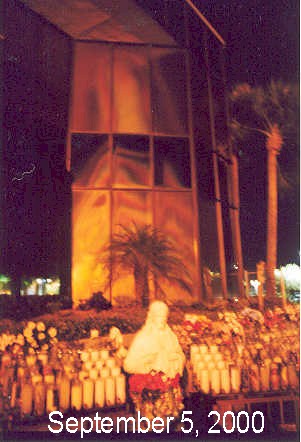
Messenger: Mary wants the Red Rosary Book printed. It will
cost $12,000 - $14,000 to get them reprinted.

Messenger: Pray for Perry.
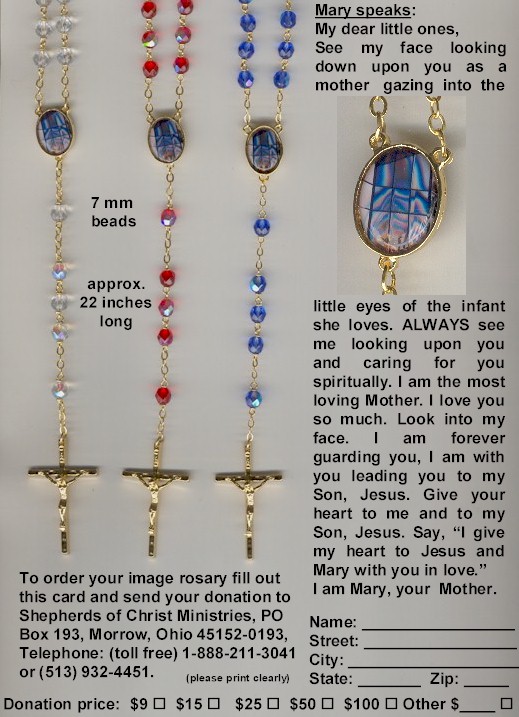
(Please copy and pass out to family and friends.)
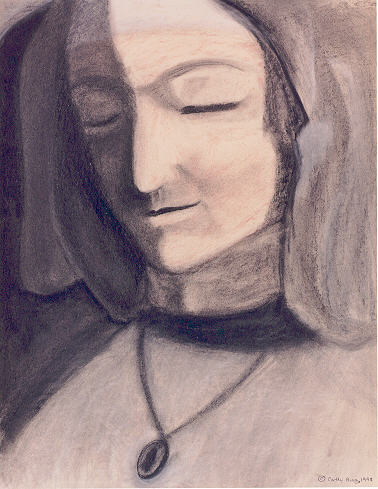 Mary's
Message from the Rosary of August 27, 1996
Mary's
Message from the Rosary of August 27, 1996
Mary speaks: I stood beneath the cross
of my Son, and my Heart was in such pain for I saw Him before my eyes. I saw Him covered
with blood. I saw Him die. My Heart, my children, my Heart to watch my Son, but my Heart,
my Heart, how I suffered for my little children of the world that give in to this world
and give up the love of my Son. O my little children of light, I give you this message.
Carry this light into the darkness for your Mother Mary, for I stood beneath the cross and
I cried. I cried for the little ones. I cried for the young ones, the ones that do not
care and will lose their souls. How do I make you see for you will not listen to me? What
can I do? I come. I appear. I beg. I plead. I give you these gifts from my Son, and you
reject me. I do not deliver messages very often anymore for I have been ignored. The
message is the same. You do not read the messages I have given to you. Please help me.
Help the little children. I appear. I appear. I appear, and I am ignored. I stood beneath
the cross, and I cried. I cried, and my Heart was in such anguish for my little children,
for I am searching for them this day as I searched for the Child Jesus. Please, please
help me. I cannot hold back the hand of my Son any longer. I am Mary, your Mother. I ask
you to help my children. You are my children of light.
Song: O Lady of Light, shining so bright,
be with us this day, guiding our way, O Lady, O Lady of Light.
Mary speaks: I appear to you as
Our Mother of Sorrows.
(End of Mary's Message)
MY
VALENTINE FOR JESUS AND MARY
AND THE WORLD
I _________________ give my
heart to
You Jesus and Mary on this day
_________________
I promise to help spread the devotion to
the Hearts of Jesus and Mary.
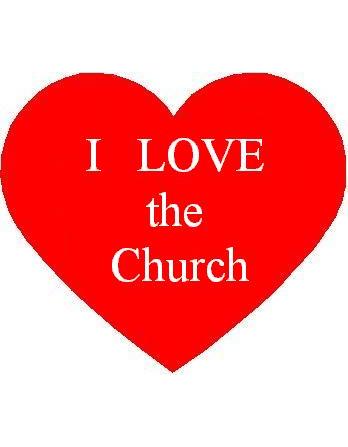  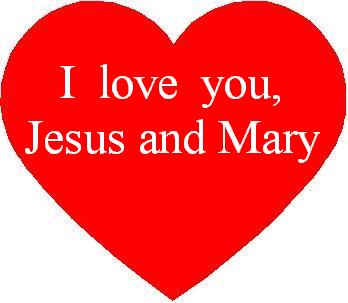 |
Question for married couples and others in intimate
relationships:
Q: When we suffer trials, how can we share these
trials with each other in the greatest love?
Table of Contents
Previous Daily Message
Main Shepherds of Christ Page
 Copyright
© 2000 Shepherds of Christ.
Copyright
© 2000 Shepherds of Christ.
Rights for non-commercial reproduction granted:
May be copied in its entirety, but neither re-typed nor edited.
Translations are welcome but they must be reviewed for moral and theological accuracy by a
source approved by Shepherds of Christ Ministries before any distribution takes place.
Please contact us for more information.
All scripture quotes are from the New Jerusalem Bible, July 1990, published by Doubleday.
Revised: October 26, 2000
URL: http://www.SofC.org
Contact Information for Shepherds of Christ
Email: info@SofC.org
Shepherds of Christ Ministries
PO Box 193
Morrow, Ohio 45152-0193
Telephone: (toll free) 1-888-211-3041 or (513) 932-4451
FAX: (513) 932-6791










 Mary's
Message from the Rosary of August 27, 1996
Mary's
Message from the Rosary of August 27, 1996

